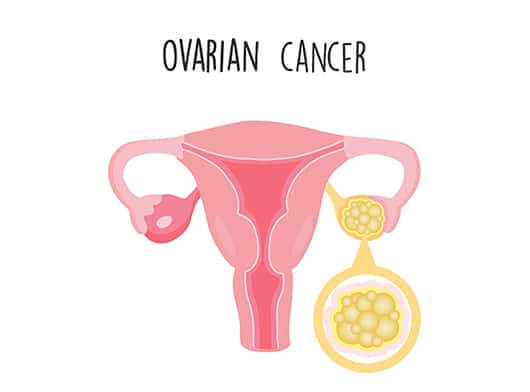Cancerous epithelial tumours are carcinomas – meaning they begin in the tissue that lines the ovaries. These are the most common and most dangerous of all types of ovarian cancers, accounting for 85 to 90 per cent of all cancers of the ovaries.
Early symptoms of ovarian cancer can include bloating, cramping, and abdominal swelling. However, since many conditions, like fluctuating hormones or digestive irritation, can cause these symptoms, sometimes they’re overlooked or mistaken for something else.
One of the most common ovarian cancer symptoms is pain. It’s usually felt in the stomach, side, or back.
Ovarian cysts are sacs or pockets of normal tissues or cells and are usually filled with fluid, while ovarian tumours are solid masses of cancer cells. Most ovarian cysts come and go with menstrual cycles, while ovarian tumours will not go away independently and require treatment.
Metastatic ovarian cancer is an advanced-stage malignancy that has spread from the cells in the ovaries to distant areas of the body. This type of cancer is most likely to spread to the liver, the fluid around the lungs, the spleen, the intestines, the brain, skin or lymph nodes outside of the abdomen.
-
There’s no sure way to prevent ovarian cancer. But there may be ways to reduce your risk:
- Use of birth control pills.
- Breastfeeding – Exclusive breastfeeding for Six months after childbirth
- Tubal ligation and hysterectomy may reduce the chance of developing certain types of ovarian cancer.
-
Bilateral salpingectomy with a hysterectomy
- Genetic Counselling


